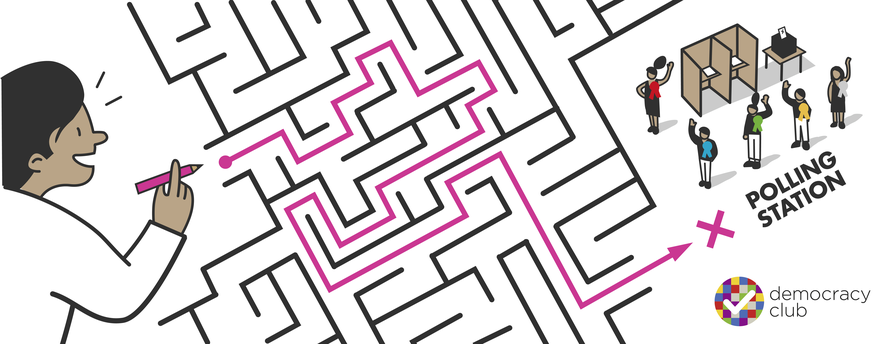2021 English local election data summary

Between 8-12 April, Democracy Club’s amazing network of volunteers collected thousands of nomination papers published on English council websites. These were manually added to our database and double checked in record time: the database was more or less complete by Monday. Enormous thanks to everyone who volunteered their time to help out.
This briefing was first published 14 April, revised with candidate withdrawals and other corrections, 20 April.
Read the full 2021 election briefing (PDF).
View the geographical summary (PDF).
See who’s standing in your area on WhoCanIVoteFor.co.uk.
Election summary
Precisely 5,000 English councillors will be elected on 6 May.
Of these, 4,648 will be elected in scheduled elections (2,662 rolled over from 2020), and 352 will be elected in by-elections postponed due to the coronavirus pandemic.1
Of the by-elections, 95 will take place alongside a scheduled election (ie. as a double, or in one case, triple-seat election), while 257 standalone by-elections will also be held, across 251 wards in 132 councils.
The figure of 352 is the largest number of council by-elections held on a single day in modern UK political history. By way of comparison, the 2019 English local elections saw 40 by-elections.
The candidates
There are a total of 19,108 candidacies across England, representing 157 political parties, as well as 1,186 independents.
However, the number of individual candidates involved will be lower than this headline figure. This is because the 2020 and 2021 electoral years have been combined, meaning that some individuals will contest more than one seat (for example, district and county seats in the same area).
Based on our initial dataset (before detailed de-duplication), we estimate that at least 1,300 individuals are standing for two seats, and at least two are standing for three.
The parties
There are 157 parties standing, down one from 2019. However, the number of minor party candidates has risen substantially, from 1,015 in 2019 to 1,787 this year. In 2019, no minor party contested more than 50 seats: this year six have done so.
| Party | Seats Contested | Proportion of total |
|---|---|---|
| Conservatives | 4,867 | 97.34% |
| Labour | 4,654 | 93.08% |
| Liberal Democrats | 3,657 | 73.14% |
| Green | 2,957 | 59.14% |
| Reform UK | 285 | 5.70% |
| Trade Unionist and Socialist Coalition | 267 | 5.34% |
| UK Independence Party | 144 | 2.88% |
| Freedom Alliance | 95 | 1.90% |
| Social Democratic Party | 70 | 1.40% |
| The For Britain Movement | 61 | 1.22% |
| Independents | 1,186 | N/A |
Uncontested and under-contested seats
In 2019, we found 151 seats went uncontested in England (ie. only one candidate came forward to stand). In 2021, that number has plummeted to four, three of which are in the Scilly Isles. In one Scilly parish, no-one has turned up at all.
In addition to uncontested seats, there are a small number of wards where fewer than two candidates are standing per available seat. In these contests, parties with enough candidates are guaranteed a seat regardless of the result. This year there are 13 such seats: 11 Labour and two Conservative.
Read the full 2021 election briefing (PDF).
Get the data
A full CSV download of all candidates standing on 6 May is available here. If you publish anything using it, please cite Democracy Club and provide a link to democracyclub.org.uk.
Our volunteers
This couldn’t have been done with our network of volunteers. Every single edit helps, but you can see the edit leader board here.
🗳
-
Thanks to Andrew Teale and Stuart Orford for their work on the seats contested data. ↩